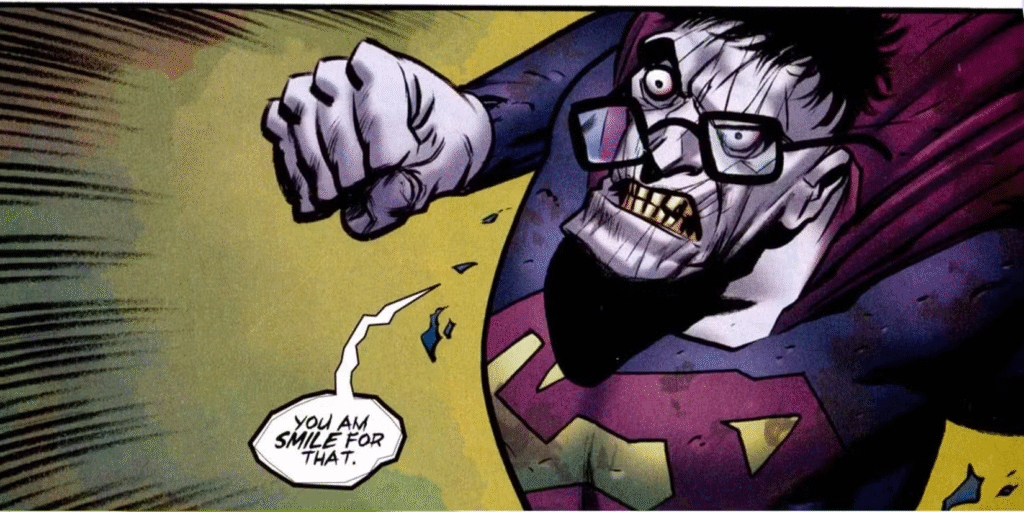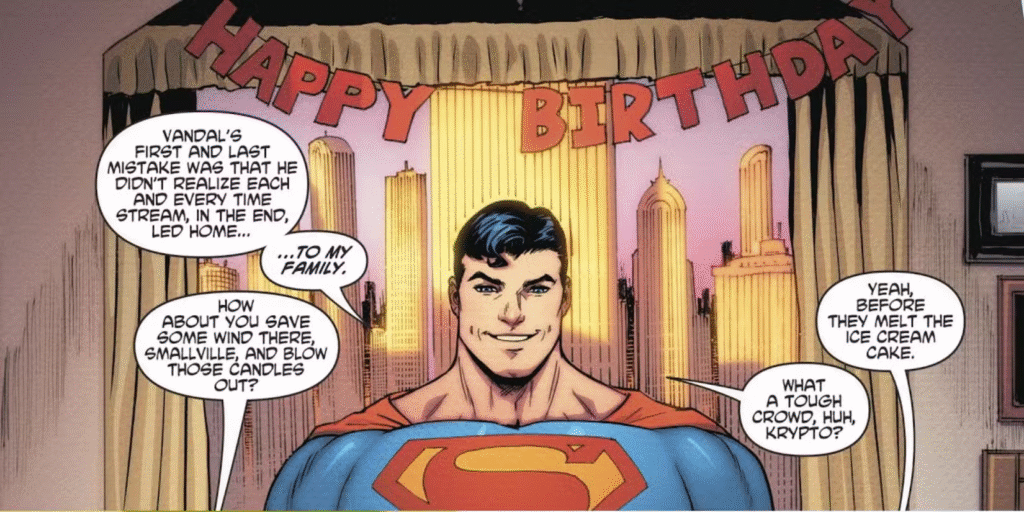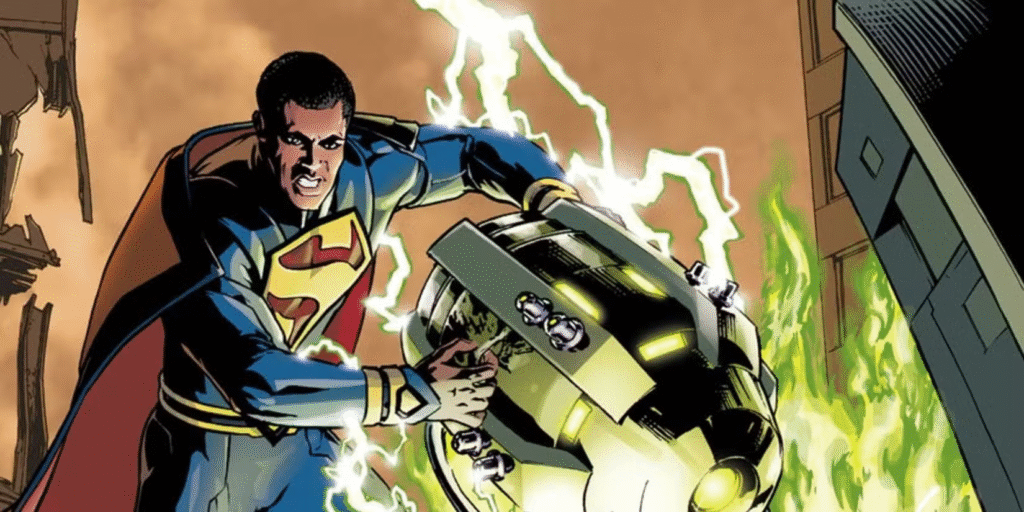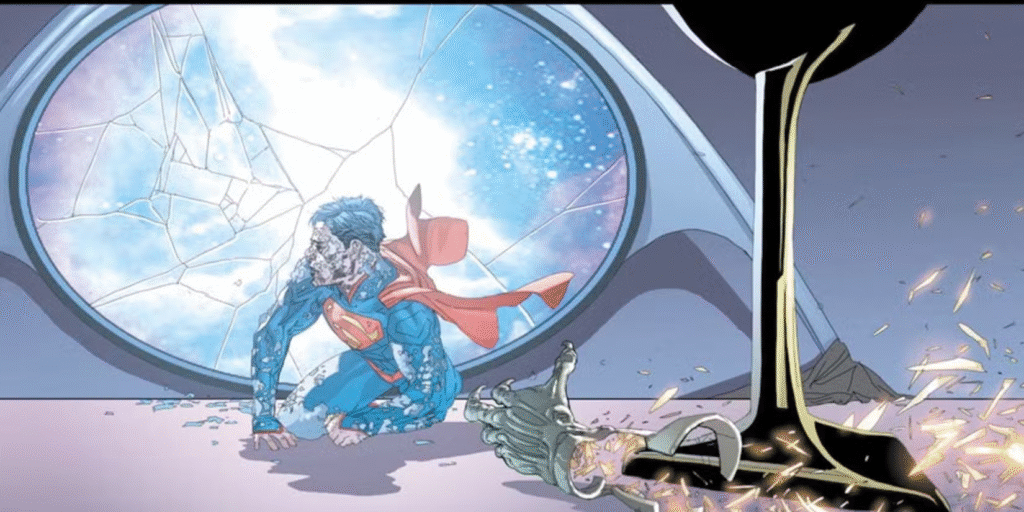
Action Comics is the most historically important comic book series in the genre’s history. It began as a collection of pulp action stories but soon centered on Superman, the first true superhero. Since then, Superman stories have expanded into numerous series, graphic novels, Elseworlds tales, and team books like World’s Finest and Justice League. Still, Action Comics remains the most essential title for understthe core of the character.
Escape From Bizzaro World is Odd, Unpredictable, and Loads of Fun

Superman stories are at their best when the writers are relaxed and having fun. Richard Donner, creator of the most influential Superman movie, worked alongside Geoff Johns to craft an unconventional but hilarious Bizarro story. Superman himself takes a bit of a backseat in this tale—the main stars are the Bizarros. They’re all twisted versions of well-known characters, each with hilarious quirks and distorted dialogue, like the Flash being dramatically overweight and Bizarro awkwardly telling him he likes it.
It’s rare to see Pa Kent beating up bad guys, but due to some oddities with the blue sun of Bizarro World, Pa ends up gaining Superman-like powers. Bizarro stories tend to be surprisingly touching, and the wholesome father-son bond between Pa and Clark shines through, giving Bizarro World emotional depth beyond just being arguably the funniest Superman comic.
Action Comics #1000 was Filled With Adventures That Lived Up to Superman’s Legacy

The best way to celebrate Action Comics‘ historic run was to bring together some of its most acclaimed writers to contribute to an anthology-based issue for Action Comics #1000. These short stories are filled with plots that showcase Superman’s strength, wit, and heart. Homages to Superman’s past—from his “faster than a locomotive” days to the Silver Age era to the modern era—are all present.
Highlight stories include Superman beating Lex in a game of chess, the city of Metropolis celebrating the greatness of Superman, and an immortal Superman coming to terms with the destruction of his parents’ grave due to the implosion of the solar system. A common theme the writers use is the reminder that normal people have the capacity for good, and that the average citizen impresses Superman just as much as he impresses them.
The Curse of Superman is a Brilliant Social Commentary on Consumerism

The Boys played with the concept of what happens when superheroes exist and their brands are commercialized, but Grant Morrison explored this same idea with Superman in a far more poignant and nuanced way within only several pages. Similar to the real world, Superman is a brand—but in this alternate reality, that branding comes with serious ramifications. Superman, once a symbol of heroism and justice, is now a tool to pacify the masses in a fascist, dystopian future
This story takes place in another alternate reality, one where Superman is also the President of the United States. Playing off the irony of an executive leader battling fascism while also having the help of Lex Luthor, a man who has gained power by exploiting the average consumer, is a potent commentary on how power, even when well-intentioned, can become entangled with the very systems it seeks to dismantle.
The Ghost in the Fortress of Solitude Forced Superman to Find Light in a Cave of Darkness

Grant Morrison’s run in Action Comics helped bring many forgotten elements of Superman’s mythos back into the spotlight. The Fortress of Solitude is reimagined as a creepy and desolate place, where Superman is clearly haunted by the destruction of Krypton and the dread of a fantastical civilization forever lost. This story is also notable for reestablishing Krypto, a relic of the Cold War era, back into Superman’s life.
Krypto served as a protector of sorts for Superman. His unwavering loyalty meant he was never far behind Clark, even as a baby. Just as Superman is a beacon of light and hope to Earth, Krypto had a similarly optimistic effect on Clark, helping him come to terms with his feelings about the loss of Krypton.
Last Son is the Definitive Zod Story

Thanks to the popularity of Superman II and later Man of Steel, General Zod is arguably the most infamous Superman villain in media after Lex Luthor. Despite that, he had only one major appearance in the Post-Crisis era: Last Son of Krypton. In this story, Zod, Ursa, and Non appear in their most iconic forms—Kryptonian warriors seeking to conquer Earth after the fall of their home planet. Earlier incarnations of Zod were alternate-reality versions that lacked the essence of what made the character compelling
Last Son of Krypton moves at a fast pace. Superman struggles to contain the collateral damage while trying to understand the motives of these fellow Kryptonians. While Krypton is often depicted as an advanced, almost angelic civilization, Zod is a reminder that no society is perfect—and that Kryptonians, at their worst, can be terrifying
Whatever Happened to the Man of Tomorrow? Concluded the Bronze Age era of DC Comics

Ongoing monthly series often resemble soap operas, rarely offering definitive conclusions. But when DC launched a hard reboot of its universe—a practice it would repeat—Alan Moore was given a rare chance to write an ending to the Bronze Age Superman. As with many of Moore’s 1980s works, Whatever Happened to the Man of Tomorrow? pushed the boundaries of a genre still largely seen as child-friendly, delivering a dark, reflective story.
The narrative serves as a farewell tour, with Superman facing a brutal gauntlet of classic villains like Brainiac, Lex Luthor, and Kryptonite Man. Beloved characters, including Krypto, die in tragic but fitting ways, marking a shift toward more mature storytelling. The climax reveals Mxyzptlk abandoning his trickster persona to embrace true evil—a symbolic transition from the whimsical Bronze Age to the more serious tone of the Post-Crisis era
Superman: Warworld Saga Put Clark Through an Unrelenting Odyssey to Fight Tyranny

The pinnacle of Action Comics in the 2020s took place on Mongul’s brutal planet, Warworld. Superman, weakened and far from Earth, leads a team of heroes to liberate the enslaved population. Stripped of much of his power, he relies on brute strength and tactics reminiscent of Conan the Barbarian to survive. The saga’s aesthetics reshaped how modern audiences interpret Superman, proving there are still endless ways to explore the character
The Warworld Saga captures the feeling of a true odyssey. Spanning 10 core issues, a finale special, and a six-issue lead-in—plus Superman and the Authority by Grant Morrison—the story unfolds on an epic scale. By the end, with Superman standing victorious, readers feel just as exhausted and just as rewarded.
Superman: Braniac Brought Braniac Back Into Relevance After Decades of Comic Book Irrelevance

Like many Superman villains, Brainiac has gone through numerous reinterpretations. Superman: The Animated Series reimagined him as a remnant of Krypton’s legacy, but in Superman: Brainiac, he returns to his Silver Age roots as a cold, calculating collector of universal knowledge. This version of Brainiac feels nearly unbeatable. Brainiac can use several different forms and its access to menacing technology is constantly putting Superman on the back heel.
Part of Geoff Johns’ acclaimed run on Action Comics, the story stands out thanks to Gary Frank’s striking artwork, which blends realistic anatomy with classic superhero style. Brainiac appears truly menacing in every form. The pacing is tight, balancing emotional beats—such as the death of Pa Kent—with the escalating threat Brainiac poses.